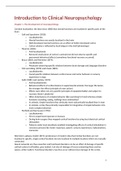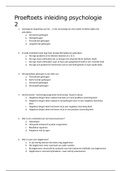Class notes
Introduction to Clinical Neuropsychology - lecture notes
- Course
- Institution
- Book
This file contains a compact overview of the lecture slides, with a few added notes, for the course Introduction to Clinical Neuropsychology. All chapters you need for this course are covered!
[Show more]













